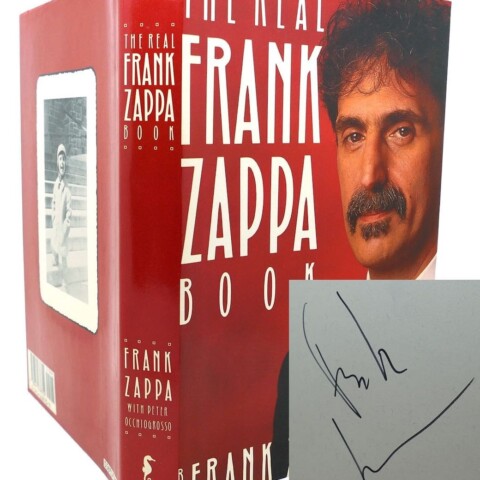I just got word that Real Groove, New Zealand’s only serious music publication, will effectively close down with its next issue (October). Officially, it’s called a “merger”, but in real terms, this means that some of Real Groove’s talent will move sideways and contribute to its sister publication, the weekly listings rag Groove Guide.
This seems especially sad in light of the fact that its parent company, Tangible, are still acquiring titles – announced this week was its acquisition of Wedding magazine, for instance.
While I’m sure that weddings (and divorces) provide a burgeoning market in tough times, it’s tragic that New Zealand can’t even sustain one serious print publication dedicated to music, film and pop culture.
I can certainly see why a decision had to be made – apparently circulation was pitifully small, and a cursory flick through the last few issues shows a dearth of advertising support.
But it does raise the question: why weren’t there enough diehard music and film fans in NZ willing to shell out for Real Groove mag?
I can see that advertising presented some tough problems. With record companies in serious decline, their advertising budgets have shrunk, and music-oriented TV must seem like a better fit for the majority of pap they’re hawking to the public, in any case.
At various times Real Groove has gone for youth market ads, and fashion ads, but each time it has meant skewing the editorial towards those demographics, and each time that has happened, I believe the readership has fallen away. That is, those readers who are the backbone of a magazine’s support, the ones that want a selection of serious and thought-provoking articles.
I’m not suggesting that Real Groove lacked serious and thought-provoking articles. In fact, each successive editor brought his own idea of what that meant, and as the magazine bobbed along the treacherous pop-cultural waters of the last 10 years, it was never short of relevant content. But what it did when it skewed the magazine towards one market or another is lost the patronage of those who wanted their magazine to have a tone that wasn’t about youth culture.
Real Groove emerged in the early ’90s when Real Groovy (its then owner) was going from strength to strength, and wanted a house organ to promote the kind of music it sold, in a similar way to Pulse, the Tower Records glossy. Of course, there have been seismic changes to the market since that time, and the magazine has reflected that. Starting out as a newsprint freebie under the direction of Stranded In Paradise author John Dix, it changed markedly with each successive editor. Both Dix and Nick Bollinger reflected Real Groovy’s roots-music bias, but it grew bigger, got a cover price, got glossier and larger in format, and eventually attempted to become a general culture bible in addition to a music magazine. It had elements of Mojo and Uncut, but reflected its smaller demographic by trying valiantly to be all things to all people.
And there’s the rub. Even back in the early ’90s, when I was editing RTR Countdown, NZ’s most successful pop magazine, the market was dividing and creating new cells that went off in all kinds of directions. In the ’80s, if you pushed a magazine right at the mainstream (Madonna, MJ, Prince), you would have a successful product. By the early ’90s, you had hair metal fans over on this corner, proto-grunge fans over yonder, New Kids On The Block fans erupting all over the show… Every week a new genre seemed to be spawning, and fans were no longer willing to read a smorgasbord of a magazine, they wanted something specific to their interest in rap, or metal, or grunge, or dance music.
Real Groove almost escaped this division by appealing to the older, more discerning music fan whose taste was diverse and who had a more open stylistic palette. But advertising agencies don’t see a market there. Real Groove could have boosted its circulation by being a NZ Mojo, but its advertising would likely continued to have dwindled.
Still, it’s been a wild ride. I’ve been writing for Real Groove since Bollinger’s reign back in ’95 or thereabouts. We used to do review turnabout at the Listener (as Jim Pinckney currently does), and I would consciously write about music that I knew Bollinger wouldn’t. That meant that he had me down as a diehard progressive rock fan, and not much else, and that’s what he got me in to do. I remember doing interviews with some guy from Genesis, some guy from King Crimson, writing a piece on Zappa. By the late ’90s, I was running Beautiful Music, a “music lounge” that was oriented towards the then captivating sounds of IDM (“intelligent dance music”), in other words, listening oriented electronica. John Russell – who had worked at Rip It Up – became the editor, and got me to do a column on obscure and experimental music that centred on electronica. Much like my shop, really. I have been writing this column for close to 15 years, so it’s going to be sad to wave it goodbye.
Speaking of columns, that was the real guts of Real Groove. It’s always difficult for NZ publications to get up and personal with big acts like the overseas publications, so features are often inferior phone interviews. The magazine’s writer budget was always pitiful, so it could never attract the best feature writers – the ones that were actual journalists, could really write, AND had a depth of knowledge about music. But it did have a bunch of specialists in different genres writing with passion and knowledge in a section of columns, and as with bFM’s specialist shows, I think this section was really the best part of the magazine, and the one that will be most missed.
I certainly don’t envy current Real Groove editor Sam Wicks, who has been on board less than a year, and must have at times faced a huge burden – the magazine effectively relaunched only a matter of months back.
Maybe it’s inevitable that the kind of content Real Groove contained was destined for the blogosphere, but it’s more than mere nostalgia for print that makes me think it healthy to have a portal containing the musings of a variety of writers with a variety of different music tastes. Blogs don’t encourage that eclectic, curious view of pop culture.
Well, adios Real Groove, and I hope your absorption leaves at least some of your good parts intact. GARY STEEL















I subscribed to RG for years – it was in fact the in-laws Christmas present every year. Sadly it just seemed to get less and less interesting over time and eventually I stopped subscribing.
Now I usually buy Mojo just because it is usually so well written I can read it from cover to cover.
Sad to see it go though. The internet is playing merry hell with the printed word these days